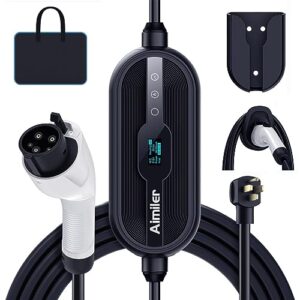What is required to charge an electric vehicle at home?
Key Takeaways
- The first step in charging an EV at home is to choose the right EV charger, with Level 2 chargers being the most common and recommended choice.
- The installation process for an EV charger at home involves choosing a location, checking the electrical infrastructure, purchasing the compatible charger, and installing it properly.
- The cost of charging an electric vehicle at home can vary depending on factors such as electricity rates and the efficiency of the vehicle, with an average cost per kilowatt-hour (kWh) in the United States being about 16 cents.
Charging an electric vehicle (EV) at home is a convenient and cost-effective way to keep your car’s battery topped up. In this article, we will explore the steps and requirements to charge an electric vehicle at home.
Choosing the Right EV Charger
The first step in charging an EV at home is to choose the right EV charger. There are three types of EV chargers available – Level 1, Level 2, and Level 3. For home use, Level 2 chargers are the most common and recommended choice. They provide faster charging compared to Level 1 chargers, which use a standard 120-volt household outlet.
Some of the best home electric vehicle charging stations recommended by experts include:
Installation Process
Once you have chosen the right EV charger for your needs, you need to follow a series of steps to install it at home:
- Choose the location: Determine where you want to install the charger, preferably near your parking spot or garage.
- Check your electrical infrastructure: Make sure your home’s electrical system can support the charger. If you have a 240-volt outlet, you may be able to install the charger yourself. Otherwise, consult a knowledgeable electrician.
- Purchase the charger: Buy the EV charger that is compatible with your vehicle and meets your charging needs.
- Install the charger: If you have a 240-volt outlet, you can easily install the charger yourself by attaching it to a stud on the wall and plugging it in. However, if you need a new outlet or a hardwired installation, it is recommended to hire an electrician to ensure compliance with local codes.
By following these steps, you can enjoy the convenience of charging your EV at home, saving time and money.
Cost of Charging an EV at Home
The cost of charging an electric vehicle at home can vary depending on factors such as electricity rates and the efficiency of your vehicle. On average, the cost per kilowatt-hour (kWh) in the United States is about 16 cents.
To calculate the cost, you need to divide the total miles you drive each month by the miles per kWh your vehicle consumes. For example, if you drive 1,124 miles per month and your vehicle gets about 3 miles per kWh, you would use about 375 kWh. Multiplying this by the average electricity rate of 16 cents per kWh, you would spend nearly $60 per month.
It’s important to note that electricity rates can vary by region. According to Forbes, the average cost to deliver 78.75 kWh of electricity to an EV from home charging equipment in September 2023 was $16.36. The lowest average residential electricity cost in September was in Washington at 11.38 cents per kWh, while the highest average residential cost was in Hawai’i at 41.52 cents per kWh.
Conclusion
Charging an electric vehicle at home requires choosing the right EV charger, following the installation process, and considering the cost of charging. By installing a Level 2 EV charger at home, you can enjoy the convenience and cost savings of charging your EV at your own convenience.
Related Websites:
FAQs:
Q: What are the advantages and disadvantages of Level 1 charging?
Level 1 charging, which uses a standard household outlet, is convenient and requires no additional installation. However, it has a slower charging speed compared to higher levels, typically adding around 4-5 miles of range per hour of charging.
Q: What are the benefits of dedicated home chargers?
Dedicated home chargers offer faster charging speeds compared to Level 1 charging, typically adding around 25-30 miles of range per hour of charging. They are also safer, as they are specifically designed for EV charging and have built-in safety features.
Q: What considerations should I take when selecting a charging cable and connector?
When selecting a charging cable and connector, it is important to ensure compatibility with your electric vehicle model. Different EVs may require different connectors, such as Type 1 or Type 2. It is recommended to consult your vehicle’s manual or manufacturer for specific requirements.
Q: What safety precautions should I follow while charging my electric vehicle at home?
To ensure safe charging at home, it is important to practice proper cable management, avoiding kinks and tangles, as well as keeping the cable away from potential hazards. Additionally, it is recommended to avoid using extension cords and consider using surge protection devices for added safety.
Q: Are there any government incentives or rebates available for home EV charging installation?
Yes, there are often government incentives and rebates available to encourage home EV charging installation. It is important to research local regulations and requirements to determine eligibility for such incentives. You can find more information on government websites or by contacting local authorities.






